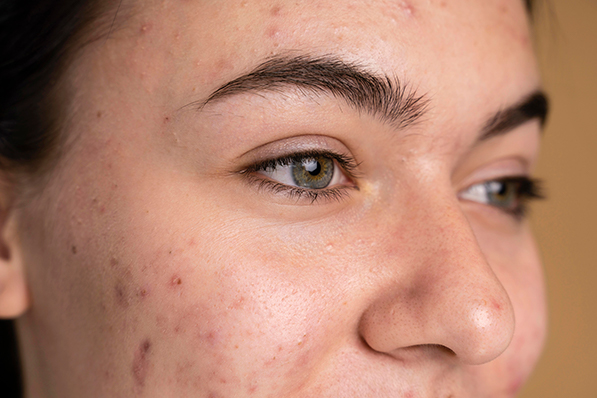Introduction
Are you struggling with hyperpigmentation, specifically facial melasma? If so, you’re not alone. Over 5 million people are affected by melasma, a common skin condition characterized by dark spots on the face. While there are various treatment options available, one particular solution stands out as a game-changer – Tri-Luma Cream. In this article, we’ll explore the five reasons why Tri-Luma Cream is highly regarded for its effectiveness in reducing the appearance of dark spots associated with moderate-to-severe facial melasma.
1. FDA-Approved Topical Treatment
Tri-Luma Cream is the only FDA-approved topical treatment specifically designed to target and reduce the appearance of dark spots associated with moderate-to-severe facial melasma. This distinction sets Tri-Luma Cream apart from other over-the-counter or non-prescription treatments. The FDA approval ensures that Tri-Luma Cream has undergone rigorous testing and has been proven to be safe and effective for its intended use.
The formulation of TriLuma Cream is a fixed-dose combination containing three active ingredients: fluocinolone acetonide, hydroquinone, and tretinoin. Each of these ingredients plays a crucial role in addressing the different aspects of melasma, resulting in a comprehensive treatment approach.
2. Synergistic Action of Active Ingredients
Tri-Luma Cream’s unique formulation combines three active ingredients that work synergistically to deliver clear and visible results. Let’s take a closer look at each of these ingredients and their specific roles in treating melasma:
a. Fluocinolone Acetonide
Fluocinolone acetonide is a mild topical corticosteroid with anti-inflammatory effects. It helps reduce inflammation and inhibits melanin synthesis by decreasing cellular metabolism. This ingredient plays a vital role in minimizing the irritative effects of the other two active ingredients, ensuring a more comfortable and effective treatment experience.
b. Hydroquinone
Hydroquinone is a depigmenting agent that interrupts the formation and synthesis of melanin. By inhibiting the activity of tyrosinase, an enzyme responsible for melanin production, hydroquinone helps even out and lighten the skin. Its depigmenting properties make it a crucial component in the treatment of melasma.
c. Tretinoin
Tretinoin is a retinoid that aids in preventing the oxidation of hydroquinone. It also improves epidermal penetration and skin cell turnover, facilitating the elimination of excess pigment and reducing the risk of skin atrophy. Tretinoin enhances the overall efficacy of Tri-Luma Cream by promoting better absorption and penetration of the active ingredients.
The combined action of fluocinolone acetonide, hydroquinone, and tretinoin addresses the key factors contributing to melasma, resulting in a comprehensive treatment approach that provides visible improvements.
3. Clinically Proven Efficacy
The efficacy of Tri-Luma Cream has been extensively studied and clinically proven. Two phase 3, multicenter, randomized, investigator-blind, active-control, parallel-group trials were conducted to evaluate the safety and efficacy of Tri-Luma Cream for the treatment of moderate-to-severe facial melasma.
In these trials, 641 subjects aged 21 to 75 years with Fitzpatrick skin types I through IV were treated once daily at night for 8 weeks with Tri-Luma Cream or different combinations of the active ingredients. The primary efficacy endpoint was the proportion of subjects achieving complete clearing (melasma score 0) at Week 8, while the secondary efficacy endpoint was the proportion of subjects achieving By Week 8, the skin should be completely clear (melasma score 0) or almost so (melasma score 1).
The results were impressive, with 77% of Tri-Luma Cream subjects experiencing complete or near-complete clearing of their facial melasma by week 8. These findings highlight the effectiveness of Tri-Luma Cream in significantly reducing the appearance of dark spots associated with melasma.
4. Short-Term Treatment Option
Tri-Luma Cream is indicated for the short-term treatment of moderate-to-severe melasma of the face, with a recommended treatment duration of up to 8 weeks. It is important to note that Tri-Luma Cream is not a cure for melasma and should always be used in conjunction with sun-avoidance measures.
Sun exposure is a known trigger for melasma and can worsen existing dark spots. It is crucial to protect your skin by using a broad-spectrum sunscreen with an SPF of 30 or higher and wearing protective clothing. Even a small amount of sun exposure can have a significant impact on melasma symptoms.
5. Safety Considerations and Possible Side Effects
While TriLuma Cream is generally well-tolerated, it is essential to be aware of possible side effects and safety considerations. Some patients may experience mild-to-moderate redness, peeling, burning, dryness, or itching during the use of Tri-Luma Cream. These reactions are generally temporary and subside with continued use.
It is important to note that Tri-Luma Cream contains a corticosteroid medicine, which may have certain side effects. These can include itching, irritation, dryness, acne, changes in skin color, and skin thinning, among others. Additionally, Tri-Luma Cream may cause a gradual blue-black darkening of the skin in some individuals. If any concerning side effects occur, it is crucial to consult with a healthcare professional.
It is recommended to discontinue the use of Tri-Luma Cream and seek medical attention if severe irritation, blistering, oozing, scaling, crusting, or any breathing problems occur. Pregnant or nursing individuals should avoid using Tri-Luma Cream, and the potential risks should be discussed with a healthcare provider.
Conclusion
Tri-Luma Cream stands out as a game-changer in the treatment of hyperpigmentation, specifically facial melasma. Its FDA-approved formulation, synergistic action of active ingredients, clinically proven efficacy, short-term treatment option, and safety considerations make it a top choice for individuals seeking visible improvements in the appearance of dark spots associated with melasma.
If you’re struggling with facial melasma, consult with your healthcare provider to determine if Tri-Luma Cream is the right treatment option for you. Remember to follow sun-avoidance measures, including the use of sunscreen and protective clothing, to further enhance the effectiveness of Tri-Luma Cream in managing melasma symptoms.
Disclaimer: This article is for informational purposes only and does not constitute medical advice. Consult with a healthcare professional for personalized recommendations for your specific condition and circumstances.
